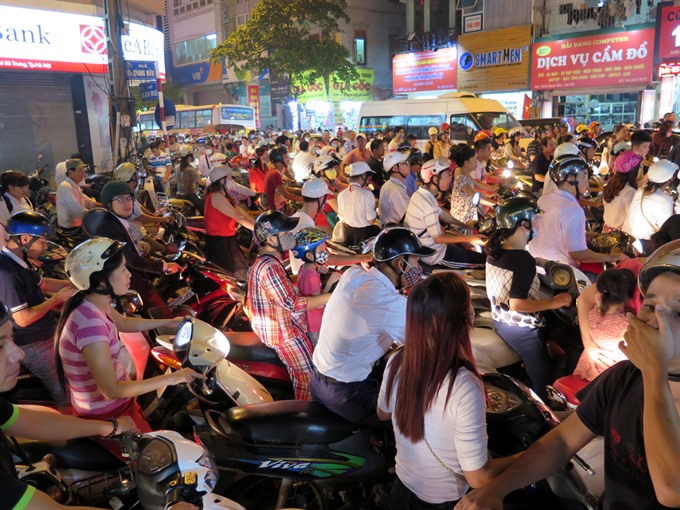 Society
Society

The capital city’s authorities are drawing up plans to set aside additional streets for pedestrians only to “lessen public dependency” on private vehicles, especially motorbikes, the head of the municipal department of transportation, Vũ Văn Viện, said at a June 21 workshop on traffic safety.
 |
| Traffic congestion at the Tạ Quang Bửu - Bạch Mai junction in Hà Nội. — VNA/VNS Photo |
HÀ NỘI — Hà Nội authorities are drawing up plans to set aside additional streets for pedestrians only to “lessen public dependency” on private vehicles, especially motorbikes, the head of the municipal department of transportation, Vũ Văn Viện, said at a June 21 workshop on traffic safety.
The event was organised by the National Traffic Safety Committee and South Korea’s Ministry of Land, Infrastructure and Transport.
Propelled by the success of the walking streets around Hoàn Kiếm Lake, considered the heart of the capital city, replication of this model is just one of an array of measures that city authorities are considering in an ambitious attempt to stop the use of motorbikes altogether.
According to the transport director, some countries in the region implemented a five to ten-year roadmap to purge inner cities of the (hitherto) ubiquitous presence of motorbikes. In the case of Việt Nam, and Hà Nội in particular, the department deems that a 13-year roadmap (towards 2030) is appropriate, during which period public transport will be developed.
Currently, Hà Nội’s traffic infrastructure cannot cope with the pressure of the swelling number of private vehicles, while Hà Nội’s bus system can handle only 14-15 per cent of people’s demand for transportation.
Responding to the concerns, Viện said measures are being taken to improve the rate to 20-25 per cent by the end of 2020, and to 35-40 per cent in 2030. He added that buses are expected to be the main method of passenger transport in inner city areas, being capable of handling 50-55 per cent of public demand.
“In the near future, on certain routes and areas, private vehicles will be denied entry or at least limited, especially on routes backed by good public transportation,” Viện said.
Khuất Việt Hùng, deputy head of the National Traffic Safety Committee, said Việt Nam has received a lot of international support in crafting the urban development master plan, however “a provincial-level master plan for traffic safety in line with international practice has not received much attention.”
Hùng added that if Hà Nội’s traffic safety master plan proves successful, projects and measures implemented under the plan will be incorporated into the development strategy for other centrally-directed cities and provinces in the future..
Dr Changhwan Mo, director of the Division of Mass Transit & Transport Administration in the Korea Transport Institute, said the capital city Seoul had faced the problems that Hà Nội is now struggling with. Seoul initially addressed them by expanding its road system, however, the method was not very successful and the city switched to focusing on public transportation and better management in order to reduce congestion and accidents.
Other representatives from the Korea Transport Institute and Korea Institute of Civil Engineering and Building Technology also shared their experience in reducing the mortality rate of children in traffic accidents. Seoul’s master plan for traffic safety was also discussed for possible lessons applicable to Hà Nội. — VNS




